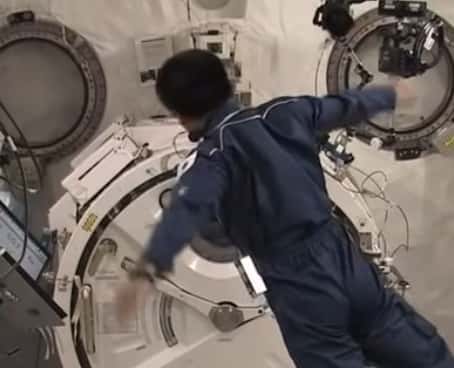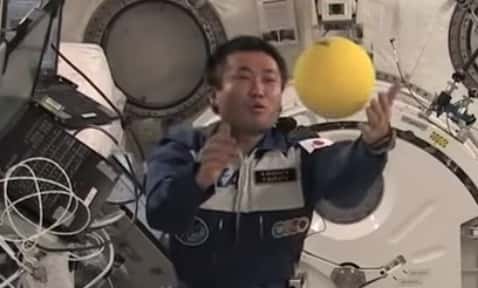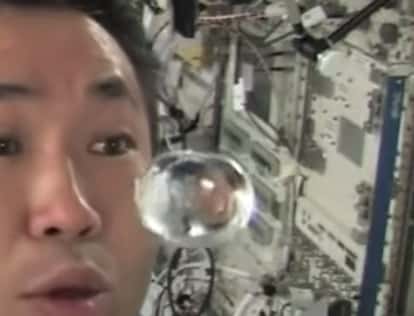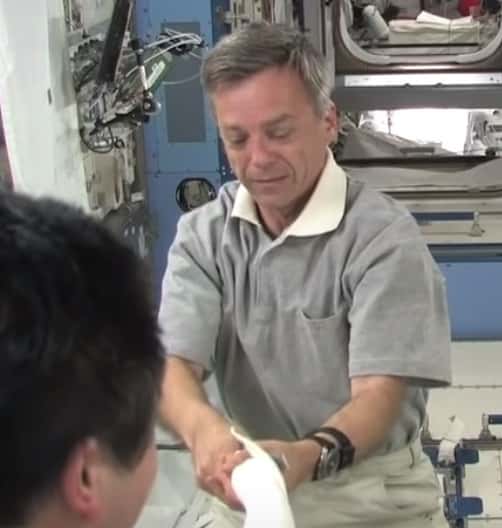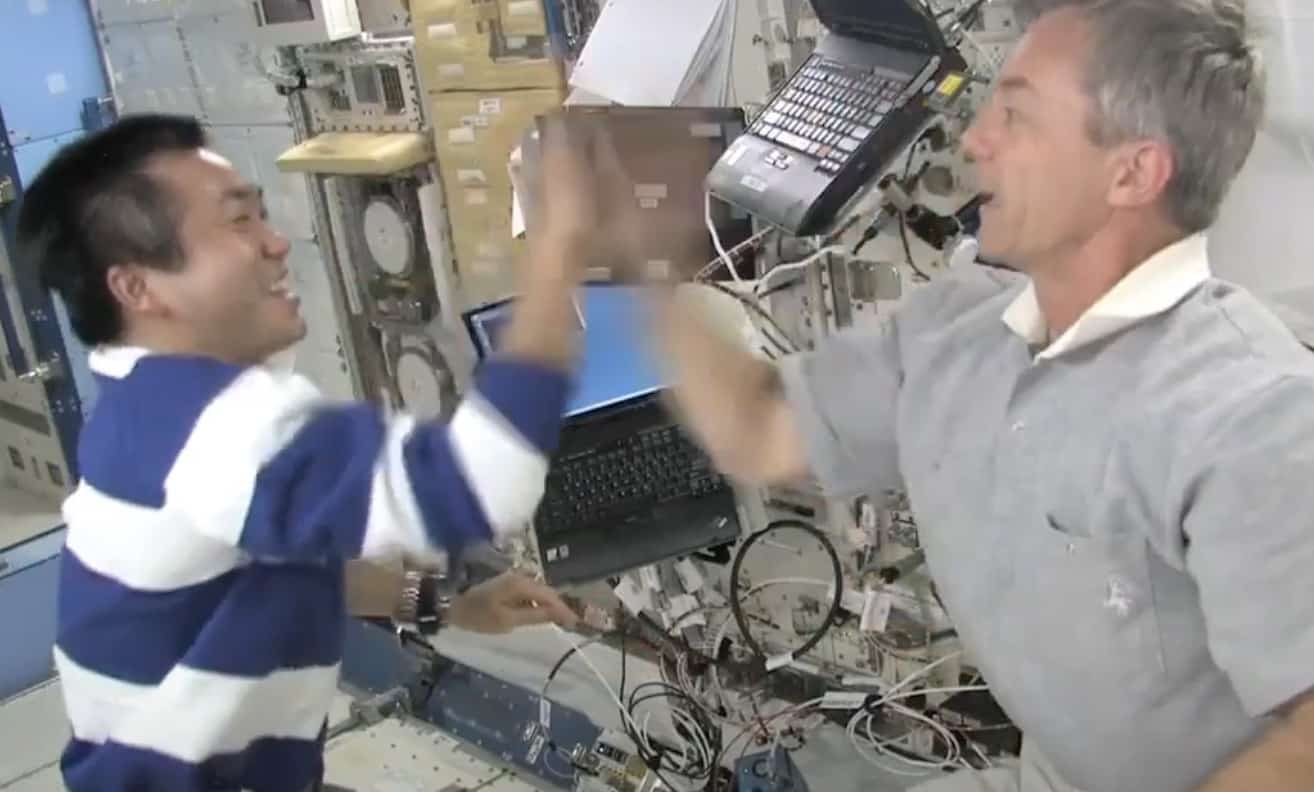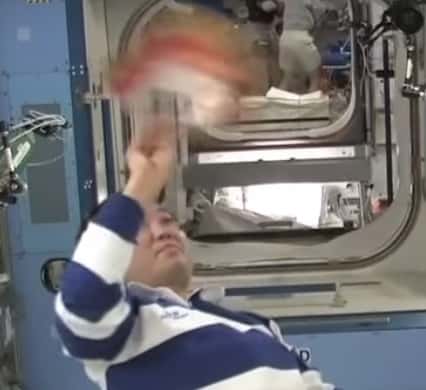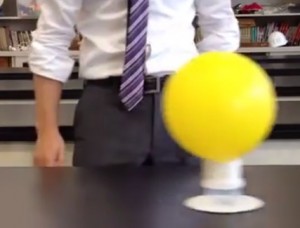Fascinating Physics in Space: Action-Reaction, Inertia, and Conservation of Momentum (Classroom Use) [Highlights from Astronaut Wakata’s Videos]
I’m Ken Kuwako, a science trainer. Every day is an experiment.
In your middle school science or high school physics classes, do you ever find yourself struggling with how to make abstract concepts like the “laws of force” or “conservation of momentum” more engaging and intuitive for students? The phenomena that can be replicated in a lab are limited, and simply explaining things with words can only go so far in sparking a student’s imagination.
That’s where authentic experiment footage from space, performed by astronaut Koichi Wakata, comes in handy. With gravity, friction, and air resistance—the “givens” of life on Earth—removed, the weightless environment of space is the perfect stage to showcase the laws of physics in a simple and vivid way. This time, we’ve carefully selected some “gem” scenes from Astronaut Wakata’s experiments on the International Space Station (ISS) that are perfect for middle and high school physics classes. We’ve added explanations on how each scene can be used in your lessons, so please feel free to incorporate them.
Essential Physics Experiment Videos with Astronaut Wakata
Conservation of Momentum: Radio Calisthenics (50 seconds)
Explanation:
This is the perfect scene to explain the law of conservation of momentum, which states that “unless an object is acted upon by an external force, its center of mass will continue to move at a constant velocity.” In the video, you can see that even as Wakata-san moves his arms and legs during radio calisthenics, his body’s center of mass barely moves. This is because the momentum generated by the movement of his limbs is canceled out by the movement of his entire body. It’s a great way to visually show students that internal forces (the movement of one’s own body) do not change the position of the center of mass.
Law of Inertia: The Ball’s Movement (5 minutes)
Explanation:
This is a perfect demonstration of the Law of Inertia (Newton’s First Law of Motion). On Earth, a ball you throw will quickly stop due to air resistance and friction, but in space, it continues to move indefinitely at the speed it was given. By asking students, “Why doesn’t it stop?” and having them think about the difference from Earth, you can make them realize how much invisible forces like friction and air resistance normally affect objects.
Law of Inertia: The Water’s Movement (26 minutes 21 seconds)
Explanation:
The sight of a floating, wiggling water droplet is sure to capture students’ attention. This video can be used to explain the law of inertia, but it’s also a great opportunity to touch on surface tension. In a weightless environment, water isn’t subject to deformation by gravity, so its surface tension allows it to maintain the most stable shape: a sphere. This is an excellent chance to teach across multiple physics topics.
Law of Action-Reaction: Hand Slapping Game and Tug-of-War (32 minutes 22 seconds, 33 minutes 57 seconds)
Tug-of-war
Hand slapping game / Pushing game
Explanation:
These two scenes are a fun way to explain Newton’s Law of Action-Reaction (Newton’s Third Law of Motion). In the hand slapping game, you can see that the force Wakata-san applies to push his partner is met with an equal and opposite force from his partner, causing both of them to move. When shown together with the tug-of-war scene, you can demonstrate to students that the forces we perceive as different on Earth due to “weight difference (mass difference)” are actually equal and opposite in a weightless environment.
Moment of Force: The Fan’s Movement (36 minutes 7 seconds)
Explanation:
When you fan yourself, you apply a force to the air (action) and the air applies a force back to you (reaction). On Earth, this force is too small to cause movement, but in a weightless environment, you can clearly see this reactionary force acting at a distance from Wakata-san’s center of mass, creating a moment of force (torque) that makes him spin. This is extremely useful for explaining the relationship between forces acting on a rigid body and rotational motion.
These videos can not only increase students’ interest in physics but also be used for introductions, summaries, and even assignments in your daily lessons. We encourage you to use the full video and experience the physics of space with your students.
Contact & Requests
Make the wonders and fun of science more accessible! We’ve compiled fun science experiments you can do at home and easy-to-understand tips. Feel free to search around!
・About the administrator, Ken Kuwako: here
・For various requests (writing, lectures, science workshops, TV supervision, appearances, etc.): here
・Article updates are delivered on X!
![]() The Science Fun Channel is currently distributing experiment videos!
The Science Fun Channel is currently distributing experiment videos!

